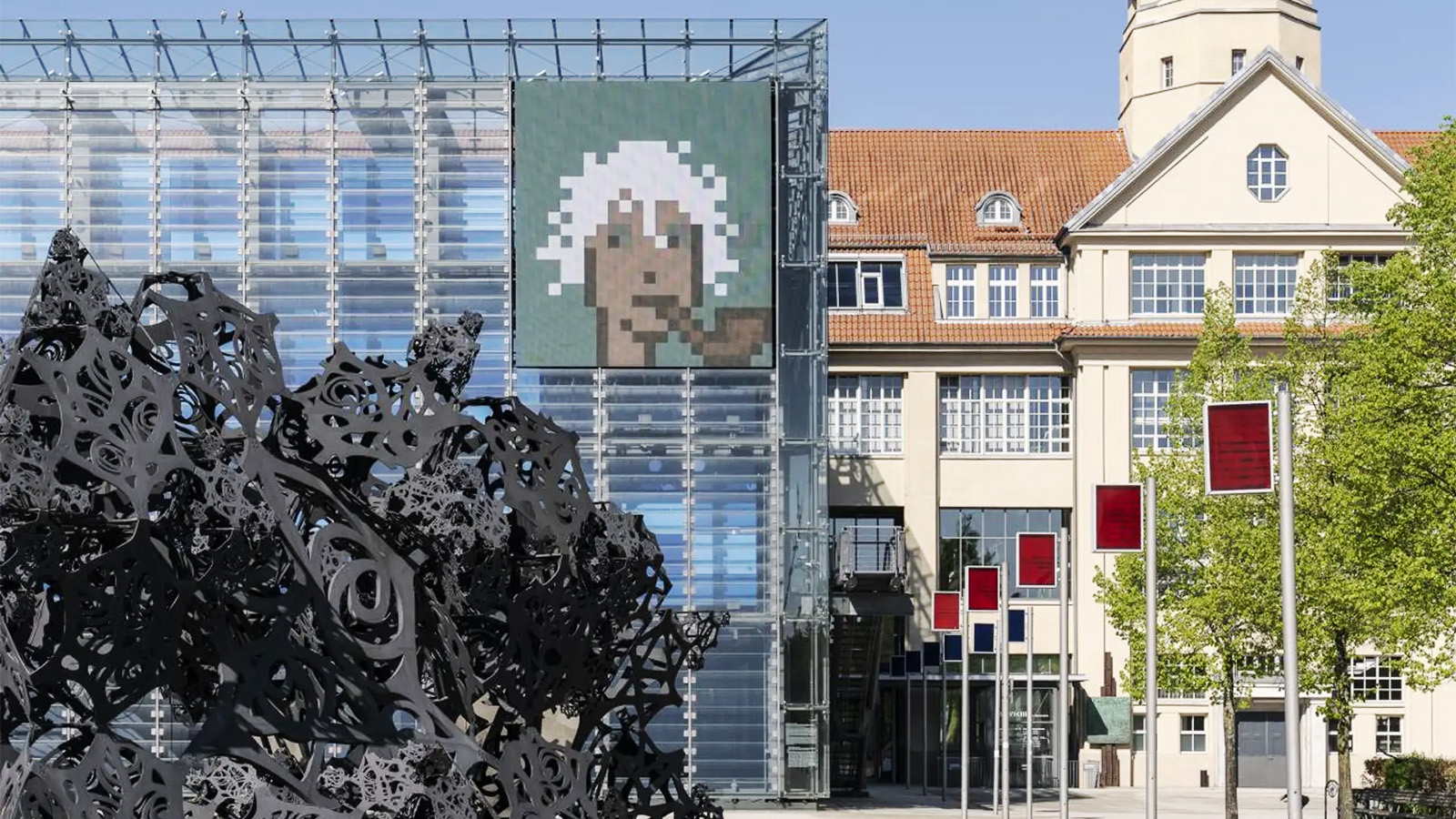Ben Davis’ Art in the After-Culture duly arrives at a knotty juncture on our cultural timeline. As a climate crisis nears and a pandemic still looms, political and social turmoil across the globe have exercised new (and sometimes necessary) demands on art-making. For creatives and institutions, technology, in our post-lockdown moment, has equally motivated and disrupted the cultural conversation. And all that’s before NFTs landed on the scene in early 2021, upending what we’ve long accepted about aesthetics, value, ownership, and commerce.
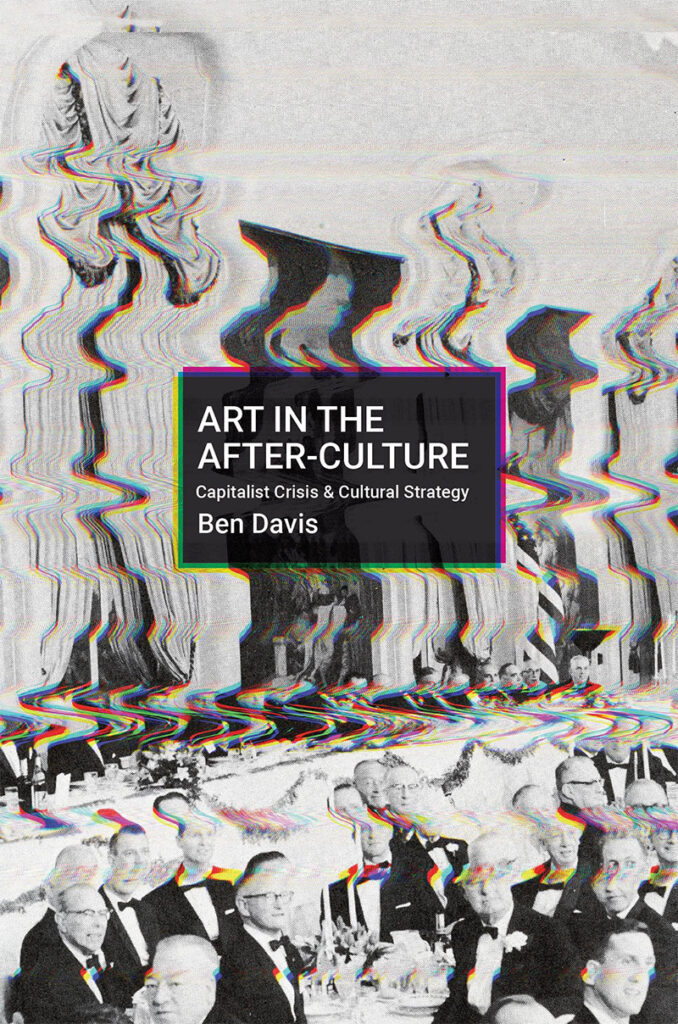
“If you read the book, hopefully you come away with a sense of realism, but also hope that there’s a place for art,” says Ben Davis. Image: Haymarket Books
It’s no wonder that the art critic toyed with the idea of titling his latest collection of essays Making Art in Terrible Times. Across its eight chapters, the volume attempts to untangle the social, political, and commercial pressures that have lately weighed on the cultural industries, forcing them into “anxious configurations” as they work out their role and currency moving forward. But in the face of terrible times, the future-gazing term “After-Culture” lends a buoyant spin to the proceedings. “If you read the book, hopefully you come away with a sense of realism,” Davis tells Jing Culture & Commerce, “but also hope that there’s a place for art.”
And indeed, throughout his book and our conversation, the long-time cultural observer seeks to mine value from the sector’s various ventures, however anxious or profit-minded. Immersive experiences, for one, have hardly gained favor with critics, but for Davis, these experiential showcases offer a view into how visitors today expect to engage with culture. And they might even have planted seeds for works like Alfredo Jaar’s “06.01.2020 18.39,” a multi-sensory installation unveiled at the Whitney Biennial. “This is an artwork that is trying to make a political point,” notes Davis, “but it’s doing so in a way that’s conversing with the demands of a contemporary audience for an experience.”
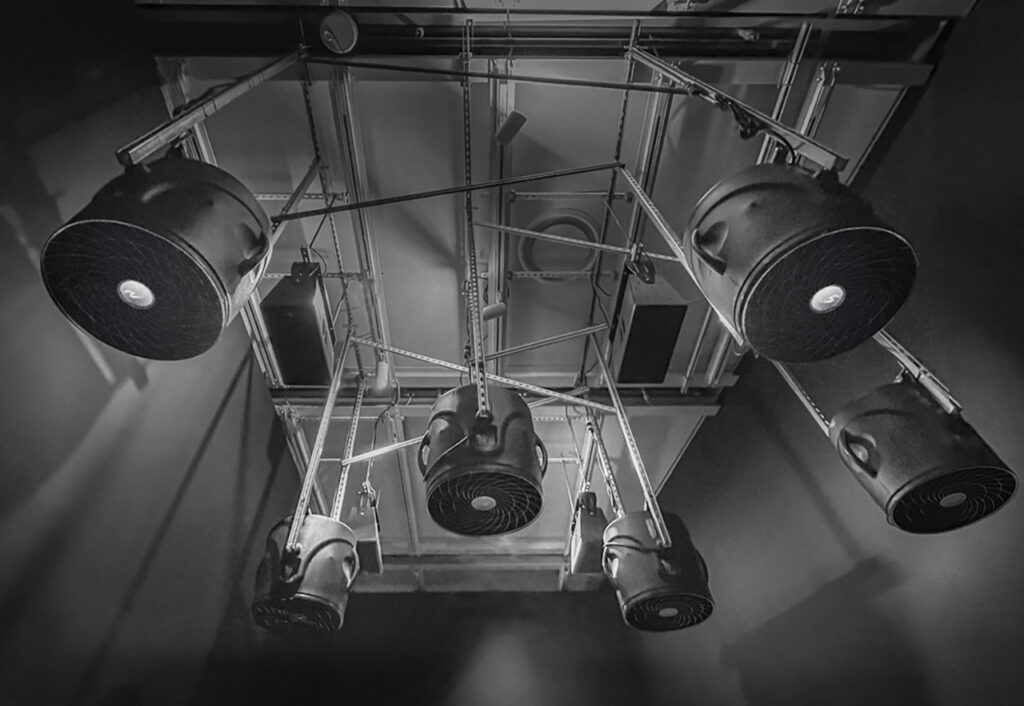
Centered on the Black Lives Matter protests in June 2020, Alfredo Jaar’s “06.01.2020 18.39,” installed at the Whitney Biennial, is accompanied large fans blasting at viewers to stimulate the windblown effect that helicopters had on protesters. Image: Alfredojaar.net
Below, he expands on the tensions and technologies that are transforming how art is made, consumed, and marketed in the after-culture.
In your book, you highlight commercialization as one of the key forces that’s shadowing art in the after-culture. What is your view on how for-profit forces are impacting the art and museum field?
It’s pretty unique that art is this sphere that is so dominated by the nonprofit structure, which is designed to defend it from mercenary impulses that come with direct market capture. In an extraordinarily fast way, new kinds of for-profit art experiences have developed since 2016 — Instagram experiences and immersive pop-ups that have mainly appeared outside of the museum space.
It’s interesting to see the conversation play out because it really affects the self-image of art when the Van Gogh Immersive Experience is the biggest art experience ever done. Just for pure reasons of thinking about how they sustain themselves, museums have to look at that and say, what does that mean for us? As a matter of fact, I believe that the actual Van Gogh Museum has now launched its own Van Gogh experience.
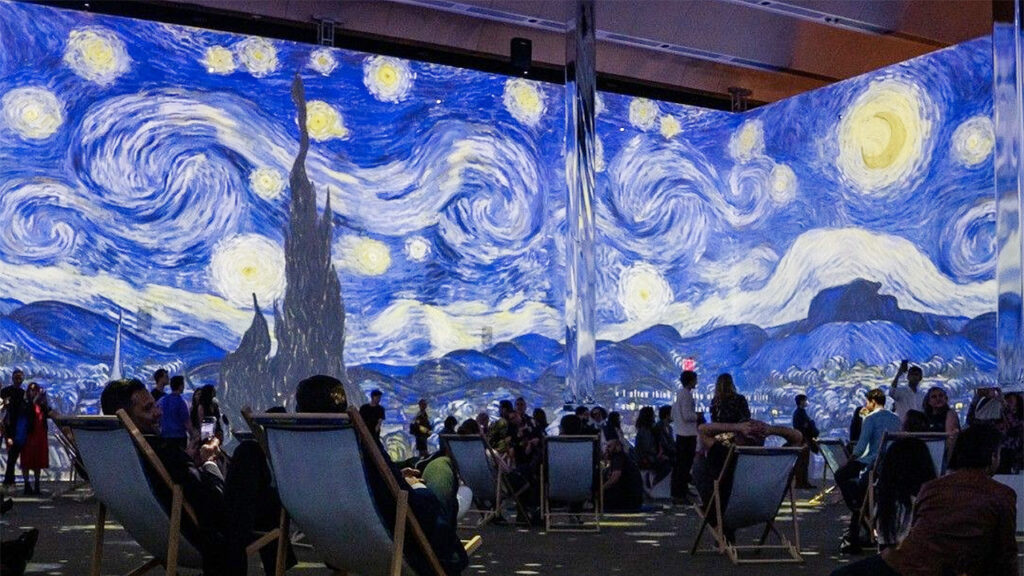
The post-lockdown moment has seen a dramatic mushrooming of immersive experiences, with some 40 Impressionist-based installations emerging across the US according to a 2021 count by Bloomberg. Image: @vangogh.experience on Instagram
Considering how these immersive pop-ups don’t always get the best rep, do you nonetheless see something redemptive in their offer?
It’s very easy to feel like you’re defending the highlands of culture from the invading armies of marketers and influencers, but the approach I tried to take is: what does it mean for culture right now? These are very, very popular things; they reflect transformation in the way people consume and are interested in art. In the book, I’ve tried to show how these experiences draw on historical precedents that were invested in ideas of popularizing the museum and creating more responsive forms of art. We have this new form of culture that picks up on that without any connection to those hopes. But it reflects the pressures on art-making and existing museum experiences, and it’s worth taking them seriously.
Somewhat related: you’ve closely covered the NFT space since the medium exploded into cultural consciousness in 2021. A year on, how do you see NFTs?
Weirdly enough, there’s a connection between NFTs and immersive experiences. The whole Van Gogh Experience exploded when people were coming out of quarantine and it’s been very striking to me that what captured the audience’s imagination in that moment were these experiences that are about art, but not the art itself. You come out of a period where you’re stuck on the screen and then the first thing people want to do is go to a place to be with art that’s on a screen. There’s been a transformation of people’s relationship to the art object in a way where it’s much more free flowing.
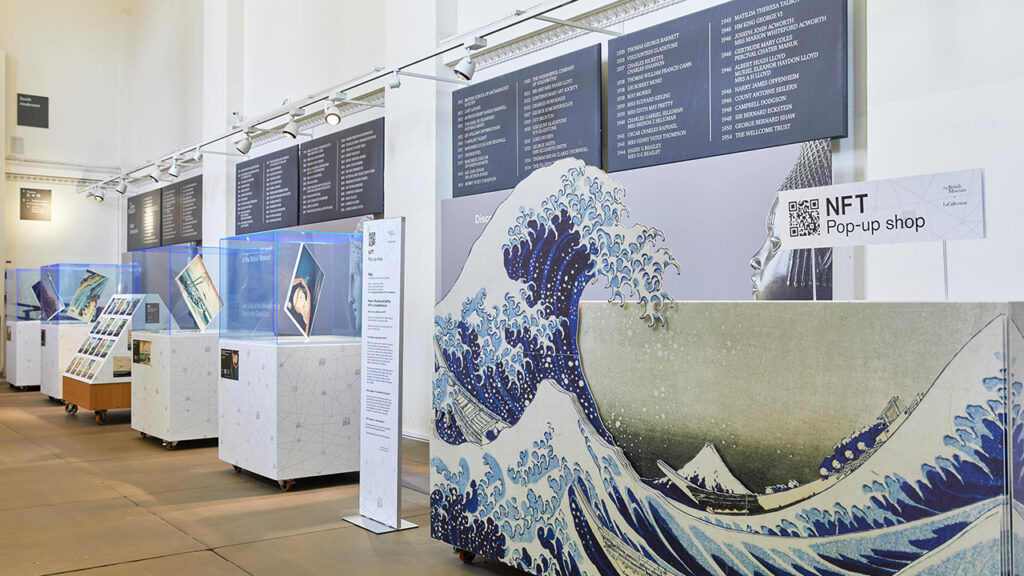
Last year, the British Museum became one of the first major institutions to sell NFTs, minting a selection of Hokusai works for auction on LaCollection. Image: The NFT pop-up shop at the British Museum / @lacollectionoff on Twitter
What do you make of NFT projects by museums?
Mainly, I think it’s been a flop because the idea of digital artwork can be a little misleading. People think about it as buying a JPEG, but you’re actually buying a link to the JPEG, some metadata, and the conceptual right to be part of a conversation. It’s really a gamified form of investment — people are not buying an art object; they’re buying into a narrative or hype cycle. If you just generate NFTs from your Japanese prints collection like the British Museum did, there’s an initial rush of attention, but there is no game or plan to continuously generate a conversation around it. With NFTs, there’s a real inability to distinguish hype from the thing itself; that distinction is completely broken down in this space.
Do you nonetheless see potential in the space or the market?
In a scene where it’s eight-tenths grift, there’s two-tenths of people who really, genuinely believe the pitch that crypto art is going to give us a better future and we’re all going to make it. I bring this up just because the theme of my book towards the end is the importance of the utopian imagination. NFTs offer a shallow utopian promise that falls apart when you look at it for two seconds, but it motivates a lot of people.
It says something to me about our moment — how thin that is and how long people are willing to bite. Society is really hungry for positive narratives and there aren’t a lot on offer. People are therefore vulnerable to all kinds of grift narratives, but there’s also a potential to mobilize the energy in a different direction if you were able to give people a better picture of the future.

